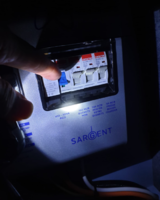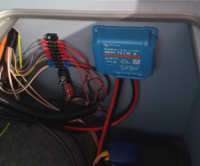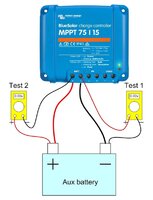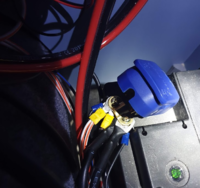Our total drive home was about 2 hours (and done in the light), so the split charger should be doing its thing and keeping it topped up.
Split charger? Is it a stop/start van?
Our total drive home was about 2 hours (and done in the light), so the split charger should be doing its thing and keeping it topped up.
As I understand it, split charger usually means a VSR. And a Start/Stop van has a smart alternator. VSRs shouldn't be used with a smart alternator. Although it would charge the leisure battery, but never to full capacity.
Also I was wondering if a VSR+Smart Alternator would cause some wild voltage swings on the Leisure battery (and fridge), and how this may affect the fridge?
Just speculating really. Someone with more experience will chip in..............
Have you definately made sure you have no loose connections anywhere in leisure battery circuit.
...I then left it a while (whilst unpacking other things) and also flicked this switch on and off (which I am not sure is even related to running off leisure battery):
View attachment 91333
And as if by magic, next time I tried it, it was all ok again. Switch was off, and switch back on again, and all of a sudden, I was getting all LED indicators showing full battery charge. Nothing had happened, i had not charged it or anything, simply waited for 25 mins, and flipped that switch on and off! The victron bluetooth app also showed battery as full charge, so no idea what had happened!
Thanks for your response @AussieMick.Your fridge will turn off when the supply voltage to it goes below a certain voltage, each brand is slightly different.
When you say the battery was 100% after electric hook up, did you just assume that or have you a battery monitor.
If you have a monitor and know it was 100percent but dropped down too low even after driving for 2 hours but then came back up to 100% again this sounds like a bad connection in the battery circuit. Possibly bad ground.
When it came back to 100% did you have a load ie fridge turned on or was there no load when you checked as a failing battery can die under load.

Was the hook-up connected at the time? If not, then that switch has nothing to do with the magical 'fix', it simply sits inline with the incoming live & neutral from your hookup before feeding the circuit breakers for your mains sockets etc - either theres a serious miswiring problem or more likely by touching the switch maybe you disturbed a poor earth connection maybe behind the box... there should be no 12v wires going into that box, only the 240 mains

 drive.google.com
drive.google.com
You need to eliminate all the electronics and wiring by measuring the actual battery voltage, ie at the battery terminals.
My guess is that the battery itself is fine but you have either a poor earth connection from the battery, or a dodgy fuse or
fuse holder, loose crimp, etc in the positive feed.
By considering fridges, bluetooth screens, mppt controllers, heaters, etc you're just complicating the faulting process.
All those things are telling you the same thing, that there is a huge intermittent volt drop somewhere when the battery is under load.
Do you have a voltmeter? Clip the meter negative directly to the battery negative terminal. Now connect the meter pos terminal to the
negative as it enters the MPPT, fridge or heater. Try to induce the fault . The meter should read zero or very near zero. If it remains zero on the meter
whilst your fault is present then its not a faulty earth connection.
To prove if the drop is in the positive feed, clip the meter positive directly to the battery positive terminal. Now connect the meter negative terminal to the
positive where it feeds the MPPT, fridge or heater. Try to induce the fault. The meter should read zero or very near zero. Whilst whilst your fault is present, one of these two tests will show a voltage drop of several volts. Thats what you need to trace.
Try this if you can & report back


The pos & neg terminals on the MPPT from the battery. Make sure the meter is on the actual terminals at either end, ie poke the meter probe into the + terminal on the mppt and the actual lead battery lug. You'll need to induce the fault to see if the voltage drop is in these connections - maybe get someone to help to do that as you need 3 hands, two of them 8 feet apartYou'll probably have to extend one of the meter leads too (either).
View attachment 92915
Or, induce the fault while the meter probes are poked into the 'Batt' connectors on the MPPT.
This is easier but wont tell you which feed is bad (ie the pos or the neg)
Cheers
Phil

 drive.google.com
drive.google.com


If you read the solar controller instructions, you will see that the battery should be connected before the solar. Its a microprocessor-controlled box, it needs a stable power supply so it can boot up properly before it even thinks about regulating solar input. With the battery terminal disconnected, arcing or intermittent, it will be in and out of brownout and anything could happen - it could even blow the controller.
You're a programmer, its like jiggling the mains plug in & out as your PC is booting up
So it very possibly does account for your solar problem too.
The main outcome of this is that your converter needs a serious kick up the arse, this isnt good enough on a 'professional conversion', its appalling not only that they did this, but also that they didnt check it when you returned the van. Its incompetence.
Cheers
Phil
